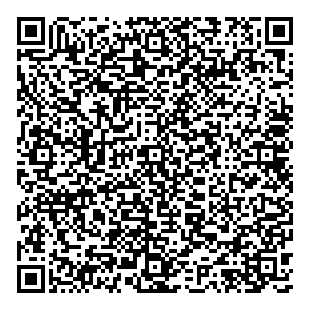Event Pictures
Venue Pictures









Duokami (a playful fusion of "paper" and "spirit" in Japanese) by France’s La RAVi performing group is a whimsical, sensory-rich fusion of music, dance, and paper puppetry, where delicate paper transforms into clouds, mountains, and living landscapes. Set to haunting bass melodies and Japanese haiku, this poetic stage play explores fragility and rebirth through playful abstraction—perfect for sparking imaginations young and old. It’s a rare gem: part visual theatre, part interactive soundscape, where every crumple of paper becomes a symphony.
By evoking elements in flux, this performance invites reflection on the fragility of life, of nature, and of our relationships with others. A sheet of silk paper, a dot of abstract color, transforms into clouds, rain, or plants. A blank page becomes architecture, windows, or a screen that appears and disappears. Handmade paper becomes mountains, deserts, or a dress. A paper ribbon turns into a path. In this constantly evolving abstract universe, “paper puppets” conjure a sense of wonder and childlike imagination.
The vocabulary of the performance is built from sound and movement, guided by sensory states. The performers’ bodies and a double bass become the landscape.
Inspired by haiku, a man and a woman try to meet through music and movement. Mischievous spirits bring the paper and the double bass to life, drawing them into a poetic world.
Japanese songs adapted from traditional haiku add texture to the musical and choreographic landscape. For children and audiences alike, everything becomes a game—transforming their world with simple elements like sticks, stones, and paper, creating new realms from the imagination.

Draft paper, tissue, kraft paper; pristine sheets, crumpled scraps, pages filled with writing, paper shaped into clothing or sculpted into art installations...
Paper is everywhere—its textures are infinite, its potential boundless. While we’re used to its everyday uses, we often overlook the quiet magic hidden within its folds.
In the workshop following the show, creators invite children to explore different types of paper: large kraft sheets, tissues, receipt rolls, and more. Together, they’ll observe the weight and texture of each kind, awakening curiosity about the material’s innate energy. Without music, children will play with the papers and listen to the sounds they make.
The performance flows with the movement of the double bass, weaving paper and dance into a duet of motion and stillness. Haiku brings gentle, profound reminders of nature’s cycles.
Through vivid sensory impressions and a playful spirit, the show offers a pure artistic experience—one that celebrates the delicate resilience of paper as a symbol of life itself.
The audience experiences the double bass in both classical and jazz modes, watching it seem to spin and dance. The grounded structure of classical music and the free improvisation of jazz meet in harmony, offering a deep and soulful encounter.

The creators invite everyone to slow down. From stillness, participants begin to feel—through music, movement, and playful paper puppetry inspired by water, wind, fire, trees, and animals. Eyes open, minds wander.
Short poems themed around nature and the seasons appear throughout the performance, sung as gentle melodies:
“A little snail climbs quietly up Mount Fuji.
Birds fly into the clouds.
Let us rejoice and play.”
*Haiku, the world’s shortest form of poetry, is known as the “pearl of the East.” In this performance, it carries timeless beauty.
When children tiptoe like falling paper, crinkle sheets to create new sounds, feel the tremble of the double bass and giggle while making up their own stories of “Mr. Snail,” we believe the performance becomes a gift—for them, and for you.
An unclassified performance, full of unbounded imagination. A multi-sensory journey that draws a picture of joy and lightness, welcoming every child, and every adult, to rediscover their curiosity about the world.

“The most beautiful experience we can have is the mysterious. It is the source of all true art and science.”
—Albert Einstein
La RAVi stands for Research in the Living Arts. The company explores the crossroads of music, dance, objects, and materials—searching for:
These explorations come together in performances, projects, and encounters designed for audiences of all ages.
La RAVi creates and presents works that blend contemporary dance, music, visual arts, and theatre. Whether staged indoors or outdoors, their multidisciplinary creations speak a sensory language—one where poetry and imagination meet theatricality and a tactile relationship with materials and objects.

Dance: Bérengère Altieri-Leca (formerly with Compagnie Philippe Genty)
Double bass: Manuel Thomas Marchès
Visual design: Nicolas Goussef (formerly with Compagnie Philippe Genty)
Bérengère Altieri-Leca is a choreographer and dancer who has collaborated with numerous contemporary dance companies. Her past work includes performances with companies led by Odile Duboc, Andy Degroat, Didier Théron, and V.O Traits de Ciel directed by Thierry and Marion Bae. She has also worked with Compagnie Philippe Genty and Cie Les Piétons, and has taken part in vocal and gestural theatre directed by Jean-Marie Maddedu. Additionally, she has choreographed for the musical collective Zic Zazou.
Manuel Thomas Marchès is a musician whose passion for jazz began at the age of 15. He started performing regularly in Bordeaux clubs, sharing the stage with artists such as Francis Bourrec, Craig Bailey, and Steve Lacy. In 1994, he studied at William Paterson University in New Jersey under the guidance of Rufus Reid. During that time, he met and learned from jazz greats like Ray Brown and Milt Hinton, and collaborated with Ari Hoenig and Johnathan Blake.





























Loading event information...


SmartShanghai.com is the longest-running English online magazine in Shanghai. We are an independent media publication created by a team of long-term, opinionated, and knowledgeable writers. We provide English-speaking residents and visitors with a curated guide to explore and celebrate the best of Shanghai.
All material is copyright of SmartShanghai
Made in and for Shanghai since 2003 | 沪ICP备08111777号-9

Our editors and admins will review your message and respond to your inbox





